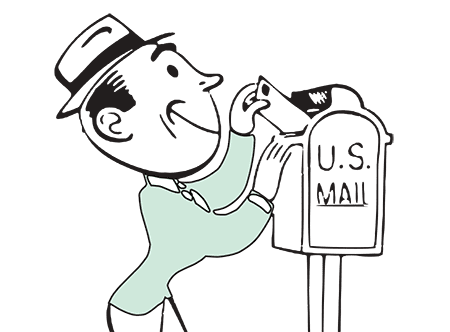Those touting the death of email are being myopic at best and fraudulent at worst. These discussions mimic the popular “x is the new y” mindset that dismissed direct mail, which is still very much alive and well. Learn more about the issue and why some of the boldest statements are often worth ignoring by reading on.
“Subheadings Are Dead” — Letter Jacket
If you want to get attention online and be controversial without really putting any creativity or thought into it, simply declare that an established concept is dead. Anyone who wants to point out evidence to the contrary gets instantly sidelined to being deniers of truth, not willing to see that the emperor has no clothes on.
Such is the tone that “hot-button trend” writers invoke when writing about email. “Why Email Will Be Obsolete by 2020,” opines Inc. “Email’s About to Die,” says Wired, quoting a guy who makes millions off of replacing emails.
However, for all the supposed writing on the wall, a lot of said writing is being drafted in email. One market research firm pegs the global number of active email accounts at 4.1 billion. From these, 193.3 billion emails are sent daily. A majority of these are concretely business-related: 108.7 billion, or 56 percent. Anyone who wants to pontificate on the slow, agonizing death of email will certainly need the patience to watch as the death throes draw out well into the foreseeable future.
In fact, email just may be made better by all the defections that have been occurring. By freeing ourselves from the more restrictive, situationally-demanded uses of email in favor of our chosen communication tool, we allow email to become purer in function. Many fail to realize that “email did not replace letters, but all classes of communications: phone calls, in-person encounters, memos, marketing pleas, etc.” writes the Atlantic. Because email had so many cacophonous, multitudinous uses, that is how our inboxes ended up by proxy.
Is email dead?
In short, no. Some of email’s original uses have been replaced by other forms of communication, such as social media and texting. But with unneeded uses stripped out, the uses of email we are more targeted and efficient. Along with direct mail and social media, they remain a key part of marketing strategies.
We have come a long way since the heydays of Hotmail. Programs like Outlook and Gmail’s native interface make spam invisible and add complex pre-sorting functions. Most of us are just too lazy to use them. Opting for something more akin to Asana or Slack is an acceptable choice to make, regardless, but saying that your xyz product is “the only solution to the dreaded inbox” is dishonest marketing spin. Email was here at the birth of the internet, and it will persist because of its early nascence. Its decentralized model stands as a bastion of control and privacy compared to most other forms of digital communication, where every missive is locked in a walled garden tended by its profiteering proprietors.
Even more uplifting, the more functionality that deviates from email the more streamlined and enjoyable the focus becomes. Marketing messages are now mostly 100 percent opt-in. Billing confirmations and password requests are flagged differently than an email with an anticipated attachment from Mom. Since unneeded uses are stripped out, the email we are left with is leaner, more efficient and more usable than ever before.
Direct Mail Shares the Same “Fate,” or Lack Thereof
As an envelope company, we relate to the journalistic attempts to forcibly put email on life support then pull the plug. However, the untethering of direct mail’s excess functionality has allowed it to make a comeback in recent years, and we suspect email will go through the same renaissance.
You can stop listening to naysayers talk about “the death of email” and send as many emails or physical letters as you want—and if you decide on the letter, make sure you have great-looking custom envelopes to go with them.



